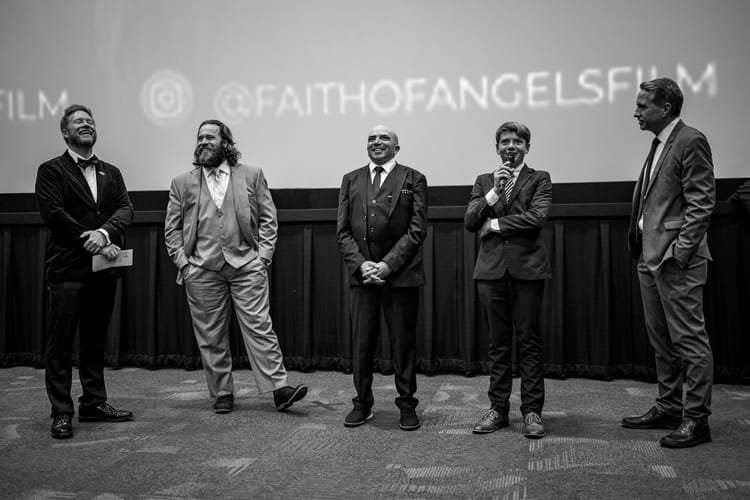Structuring Your Waterfall: Why "Less Risk" Isn't Always Better

Recently I shared a blog post about film investment structures and received some enlightening feedback that made me take another look at my approach. This is the kind of dialogue that helps us all grow and better serve our investors.
The Core Issue
Investors don’t just want less risk exposure — they want priority, protection, and velocity on their capital. A “small piece of the pie” doesn’t work if the pie takes 5 years to bake and gets eaten by fees.
I recently shared a post promoting the post and I received some great feedback, specifically from Jon Altham.
He shared this:
“Limiting investor equity to 40% is not the safety net its set out to be.Yes, leveraging incentives, pre-sales, and sponsorships is smart. But using that structure to justify reducing investor equity to 40% while loading the balance with senior debt? That’s not de-risking. That’s reordering the capital stack to the equity investor’s disadvantage.”
Let’s break down his argument and clarify how what I said differs.
TL;DR - Jon’s right.
1. “Limiting investor equity to 40% is not the safety net it’s set out to be.”
- Point being made: Reducing equity exposure doesn’t automatically mean lower risk for investors, especially if the rest of the capital stack (like senior debt) still comes with repayment priority.
- Interpretation: The commenter believes your equity investors are being structurally subordinated, not protected.
2. “Using that structure to justify reducing investor equity to 40% while loading the balance with senior debt? That’s not de-risking. That’s reordering the capital stack to the equity investor’s disadvantage.”
- Just because investors are exposed to less money doesn’t mean the order of repayment (waterfall priority) is in their favor. If debt dominates, equity is still last.
- This is a fair criticism. If you’re using pre-sales, incentives, and gap debt to fill the other 60% of the budget, the equity investor has less skin in the game but still sits at the bottom of the waterfall.
3. “Debt gets repaid first. Incentives often flow after production. Sales agents and distributors still take their cuts.”
- Even with incentives and pre-sales, the timing and positioning of cash flows matter. If these sources aren’t accessible early, equity waits a long time — possibly behind P&A, residuals, distribution fees, etc.
4. “Equity investors who are already a minority in this model are pushed to the back of the waterfall.”
- If investors are only contributing 40% and the rest is debt-like or sales-linked, their downside is uncapped and they have less influence over the structure — a tough position.
5. “Preferred return or 10–20% IRR… doesn’t hold up if capital realisation is delayed 3–5 years.” is delayed 3–5 years.”
- If your model assumes timely recoupment but the cash actually flows back slowly (due to debt, P&A recoupment, sales fees), the promised IRR gets eroded fast.
6. “You can provide more meaningful investor security by using these incentives to protect and support equity positions, not replace them.”
- Instead of displacing equity with other funding, structure those sources (incentives, presales) as collateral, guarantees, or partial recourse — strengthening equity instead of minimizing it.
“Smart structuring isn’t about making equity look smaller – it’s about making it stronger.”
Jon is right, so the way I position and message about this stuff needs to be clearer in the future:
- We limit investor equity to 40% but protect and prioritize that equity using a hybrid waterfall structure that leverages incentives to support recoupment, not delay it.
- Going forward that needs to be emphasized, along with faster capital return, not just smaller exposure.
Let’s model this out to compare the two structures:
🟦 Option A: The Way I Presented The Model
Equity = ~40% of total budget
Remainder = Pre-sales, incentives, sponsorships, and senior debt
Standard recoupment waterfall: Debt → Soft Money → P&A → Equity

🟧 Option B: “Stronger Equity” Model (as proposed by the commenter)
Equity = Higher share of budget (e.g. 60–70%)
Incentives and pre-sales are used to collateralize or secure equity, not displace it
Modified waterfall: Equity recoups earlier (possibly pari passu with incentives or above certain soft costs)

Revenue & Cost Assumptions

Waterfall Summary
🟦 Option A — Traditional Waterfall
- Distributor & P&A – $1,137,500
- Senior Debt – $500,000 + 10% = $550,000
- Incentives – Flow post-recoupment (used to repay production)
- Equity – Last in waterfall: receives up to remaining $425,000
Investor Return:
- Investment: $1,000,000
- Return: ~$425,000
- Loss of 57.5%
- IRR: Negative or ~–10% (over 5 years)
- ROI: ~0.42x
🟧 Option B — Equity-First Structure
- Distributor & P&A – $1,137,500
- Equity Recoupment (Backed by Incentives) – $1,000,000 repaid from $2.1M pot + $500k incentive routed directly to equity
- Soft Money & Remaining Equity Upside – Split last
Investor Return:
- Investment: $1,000,000 (of $1.625M total equity)
- Return: ~$1,100,000 – $1,300,000
- IRR: ~10–15%
- ROI: ~1.1x – 1.3x
- Payback: Within 3–4 years, aided by priority position and tax credit support
Comparison Summary


Key Takeaways for Film Investors
- Structure matters more than size - A smaller equity position with poor structural protection is worse than a larger, protected position
- Velocity is crucial - The timing of returns can make or break investor IRR
- Use incentives strategically - They should strengthen equity positions, not replace them
- Think holistically - Consider the entire capital stack and waterfall when evaluating film investments
What This Means Going Forward
As we continue building our film fund and structuring deals, we're implementing these insights to better serve our investors. We're focusing on:
- Stronger equity positions with clear priority
- Faster capital return mechanisms
- Strategic use of incentives as protection rather than replacement
- Transparent waterfall structures that prioritize investor returns
Want to learn more about how we're implementing these principles in our current film investments? Check out craftsmanfilms.co/fund.






Member discussion